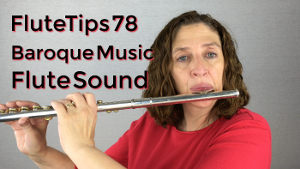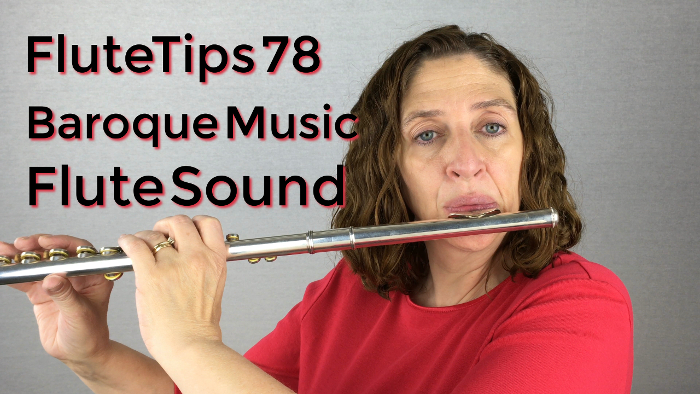There’s a lot of discussion out in the world today in the flute world about the sound that you should have and the style of which you should play Baroque music. I am not the world’s best expert at stylistic performance. Although I think I’ve got it down pretty well. However, there are those wonderful Baroque scholars out there that can discuss style and technique until the cows come home. But let’s just talk about the flute sound, when you’re playing Bach on a silver flute.
In years past when performers played Bach on their silver flute, no one questioned the sound since silver was an upgrade from wood. One performed with the wonderful new silver sound. This was the norm for a long time. Because this is the upgrade from the Baroque flute. Then one day someone came up with the term authentic performance practice. The idea being, how can I perform as one would have, if they lived and learned as in the day it was written. However, the difficulty being that I’m still playing it on a modern instrument. So, what to do?
These are all questions that you need to wrestle with as a performer. Are you going to play your Baroque, with the silver sound that you can get with the instrument of today? Or are you going to take this modern flute and consider how that sound can change to be more like a wooden flute? We can change our embouchure and create new colors of sound that emulate the wooden sound. One can get a woody sound but it is going against everything one has learned about getting a good silver sound.
You have options. I’ve heard them both ways. There are very nice recordings on YouTube and Spotify and other recording platforms. If you listen to people that you respect, you’ll hear sound that runs the gamut from silver to wood. I heard Amy Porter play the Marin Marais Les Folies D’Espagne. I’ve actually heard two recordings of her playing this. One recording is using the more silver type sound. It wasn’t the most authentic sound that I’ve heard but I think it’s lovely, really very nice. Then one time she posted another video of her playing the same piece but entirely different! She played with a very wooden sound. It was very unique and I enjoyed listening to that one as well. I enjoyed both of her performances. But I came the conclusion that it was a big risk. Risk because if you aren’t established as a performer, than the very wooden sound can be interpreted as a “not so good” type sound. If there is nothing to compare your sound with I think It could be misinterpreted.
So, what do we do? That is actually a question for you to answer on your own. But I think there is a compromise sound. A sound that falls in between wood and silver. For us regular people, I think there is a sound that goes in between. Experiment with the sound. What sound would move away from that rich silver sound and yet not go so far as total wood? It is in there it will take some experimenting on your part.
When I want to play with Baroque wood sound, I lift up my embouchure and make sure that I’m playing with an open relaxed embouchure. I will also back off on the vibrato and make my articulation less crisp by using “D” sound with my tongue and also moving my tongue a little bit farther back on the roof of my mouth. I don’t want the tongue to get clunky. So, I don’t go too far back. But a wooden flute would not get that crisp “tah” sound that silver gets.
If I perform all silver I will widen the embouchure and aim the air in a downward trajectory to get that rich silver sound and of course use lots of vibrato.
I most prefer when I’m performing Baroque to use a sound somewhere in the middle. I like to open the sound and make it less rich. Also, my vibrato is much less obtrusive. One of my teachers once described Baroque vibrato as back vibrato. I think that is a great description. I will use a “du” articulation to keep my tongue clear but not extremely responsive.
You have choices when performing Baroque on your modern day flute. Personally, I think there are options and not just one way of performing. As a music teacher of mine once said “Just make music”.
That says it all.
Have fun!
DoctorFlute
Watch me demonstrate this: FluteTips 78 When I’m Playing Baroque Music What Flute Sound Should I Use

